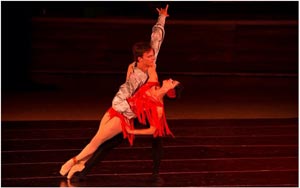The season from June 20 thru 28 at the National Theatre will have in the leading roles the first figures Viengsay Valdes, Anette Delgado, Sadaise Arencibia, Dani Hernandez, Victor Estevez and the first dancers Luis Valle, Dayesi Torriente and Estheysis Menendez, among others.
The program of these performances includes the restaging of The Sylphides, neoclassic ballet on the original version of Russian Mijail Fokin and Celeste, the Belgian-Colombian Annabelle Lopez Ochoa.
The mentioned artists are accompanied by Grettel Morejon, Jessie Dominguez, Alfredo Ibañez, Ginert Moncho, Ely Regina Hernandez, Glenda Garcia, Francois Llorente and Rafael Quenedit, among others.
Although choreographer Alonso, one of the founders of the BNC, created Carmen specially for Russian Maya Plisetskaya, there is no doubt that other grand ballerina, Alicia Alonso, made the gypsy become a legend of classical dance.
A Little after the world premiere in Moscow, on August 1st, 1967, Alonso danced Carmen in this capital and exceeded all expectations, as for many expressed the essence of Carmen choreography, which lies in the syncretism of the Spanish, the Latin and African, present in Cuban identity roots.
Interpreters of many countries consider the role a challenge, also the literary original (1845) of Prosper Merimée on which many musical, fine arts and dancing creations are based, is considered a challengte to social and genre constructions.
This version of Carmen still has an impact due to the atypical use of technique, the dancer comes down from tiptoes, walks on heles and adopts closed positions with her legs, in contradiction with the academic principle of turning out or endehorsing of the legs from the hip to the tip of the feet.
Carmen impersonates the inconformity with the old social order established and dominates a desire of emancipation so strong she shows indifference before the tragic predictions of the cards and diez for that yearning for freedom, victim of the intolerance of an era.
This choreography fusions successfully the classical technique with the latin character, besides distinguishing for the possession of a vast symbology seen not only in attitudes of the characters but also in a stage designed like a bull fighting plaza, symbol of life and death.
{flike} {plusone} {ttweet}



